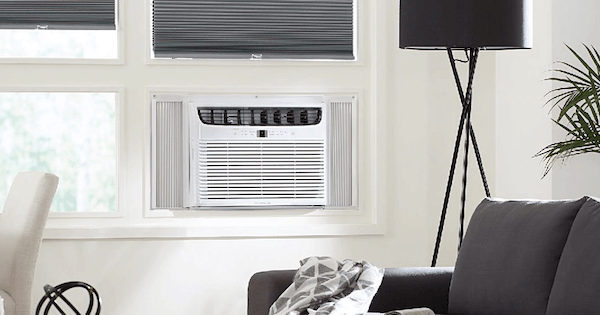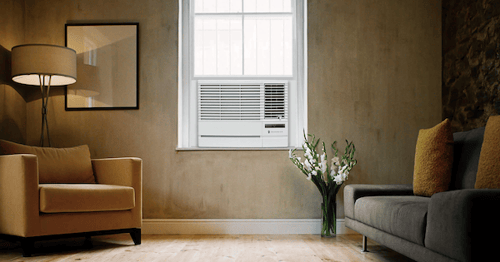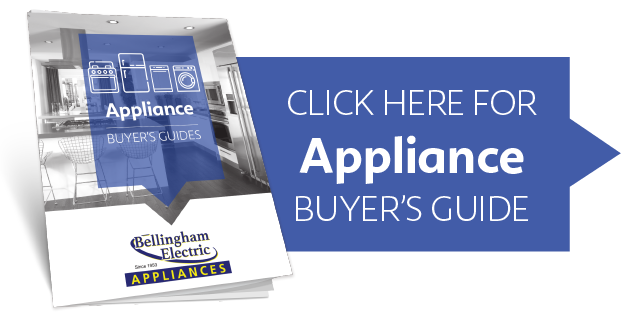
Is your old air conditioner getting noisy, or are you sick of how much electricity it guzzles down every summer? Today's energy efficient air conditioner options can help cut down on these costs. Once you know what size air conditioner you need, it's not too hard to figure out what models offer the best energy efficiency.
Which model is the most efficient depends greatly on the size of air conditioner you need, so we won't be making product recommendations in this article. We recommend that you use the Energy Star calculators linked below to sort through products that meet your BTU capacity needs and other must-have features. (For more info on choosing a new AC, check out our air conditioner buying guide.)
Table of Contents
The Easiest Way: Use Energy Star
The easiest way to find an energy efficient air conditioner - including window and through the wall models - is to use Energy Star's product finder. (Energy Star also keeps track of energy efficient central air conditioning as well as ductless mini-split models, too!)
Energy Star rated air conditioners are guaranteed to offer lower energy usage - as of this writing, all Energy Star rated room air conditioners cost less than $75 per year to run, making them at least 10% more efficient than non-Energy Star models. The cost per year is based on the assumption that you run it seasonally - 8 hours per day for 3 months of the year, based on the national average cost per kWh.
Using Energy Star's product finder will also hook you up with rebates if any are available in your area! Sometimes utility companies and other organizations offer rebates for upgrading to Energy Star rated appliances.
Click here to use Energy Star's room air conditioner product finder.
Click here to use Energy Star's central air conditioner product finder.
Click here to use Energy Star's mini-split product finder.
Features & Specs to Look For
When you're looking for energy efficient air conditioners, there are a few additional details you can use to compare different models. Again, keep in mind that you should be using the right size of air conditioner for the room or rooms you want to cool - the basic calculation is 20 BTUs per square foot. Here are some other features to consider:
-
Variable speed compressors. Typical air conditioners have a simple "on/off" compressor (the compressor is the motor providing the air conditioning and is the main source of noise from these units). The compressor flips on at maximum capacity and runs until a timer or thermistor tells it to stop. Variable speed technology allows an air conditioner to control the temperature continuously. This reduces operation noise and is also more efficient.
-
Take note of the CEER. The CEER (or SEER when comparing central air systems, mini splits, and heat pump equipment), or Combined Energy Efficiency Ratio, is a measure of the efficiency of the air conditioner. The higher the number, the better - and most window air conditioners have CEERs around 12.0 or more. The older measure is just the "EER," and it's usually close to the CEER in window units. The CEER is significantly lower than the EER in portable units - if you're shopping for a portable AC, make sure you are looking at the CEER, not the EER.
-
Pay attention to insulation. An Energy Star room air conditioner will come with good materials and clear instructions to minimize air leaks by helping you properly seal and insulate the unit.
-
Connected functionality. Beyond a remote control, some of today's air conditioners now allow you to set timers and turn the unit on and off from your smartphone. This can offer energy savings as well as convenience beyond the simple 24-hour on/off timer option. If you want to set your air conditioner to start up 30 minutes before you get home from work, you can do so - and if you're ever running late, you can easily adjust the startup time. Or maybe you forgot to turn the AC off before you left to run some errands - now you can shut it off or adjust the temperature with your phone!
- Adjustable fan directions. Being able to change the direction of the air coming from a room air conditioner can help ensure that you're getting the best circulation possible of cool air. Some models have vents that are tilted upwards - since cool air sinks and hot air rises, sending the cool air upwards helps improve air circulation and make the space feel cooler.

Other Ways to Reduce Cooling Costs This Summer
Sometimes even an energy efficient air conditioner isn't enough to stop you from wincing when you open your electric bill. If that's the case, here are a few other things you can do to stay cool:
-
Keep the shade and reduce air leaks. Using window treatments or just a good pair of curtains can do wonders to keep your home cool. Consider other potential air leaks as well - seals around doors and windows can make a home gain heat more quickly in the summer. Use fans thoughtfully - moving air can make a room feel several degrees cooler!
-
Avoid using certain appliances during the day. Dishwashers, stoves, and dryers can all put out heat into the surrounding area. When buying a window air conditioner for a kitchen, Energy Star recommends adding 4,000 BTUs of cooling capacity to the unit on top of the 20 BTU/square foot requirement!
-
Turn up the thermostat. According to the Department of Energy, for every degree warmer that you can go, you can save around 3-6% on your bill. This is in reference to central air, so the savings may vary somewhat with room air conditioners. Sticking to 78 degrees may be a sweet spot for energy efficiency in some cases. With window air conditioners you have the advantage of being able to cool a few specific rooms that need it.
-
Turn up the temperature at night. Try an air conditioner with a "sleep mode" or use a 24-hour timer to achieve this. Turning the temperature up a few degrees while you're sleeping allows you to stay comfortable while reducing energy usage.
-
Don't leave your AC on all day. There is an old myth that leaving an air conditioner on all day is less expensive than turning it off while people are away. A properly sized room air conditioner can noticeably cool a room down in about 30 minutes, and some only need 15 minutes to cool a room from 90 to 80 degrees (Source). At most, reaching a comfortable temperature should take an hour. Considering that most models have single-speed compressors (they're either running at max power or off), it makes sense that running a room air conditioner as needed should save energy compared to running it all day.
Did this help you find the information you were looking for? We hope you now have the tools you need to find an energy efficient air conditioner. Leave us a comment below - We'd love to hear from you!



